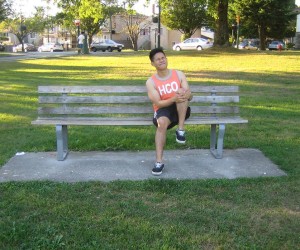The patellar tendon works with the muscles in the front part of the thigh in order to straighten the leg. Even though anyone can damage the patellar tendon, the tears are likely to occur in middle-aged individuals who engage in sports or activities that involve jumping or running. A full tear on the patellar tendon is considered as a debilitating injury and requires surgery in order to restore full functionality of the knee.
The patellar tendon tears can either be incomplete or full. The partial tears will not disturb the soft tissues while complete tears will tear the soft tissue in two pieces. The patellar tendon typically tears where it connects to the kneecap and can break a piece of bone as it tears. Once the patellar tendon is fully torn, the tendon is detached from the kneecap. If the tear is due to a medical condition such as tendonitis, the involved tendon is torn in the middle.
Possible causes
When the patellar tendon is subjected to a strong force, it can cause a tear. Direct impact on the front part of the knee from a fall or direct blow can also lead to tears. In some cases, patellar tendon tears can also occur when the knee is bent and the foot is planted such as landing from a jump.

If the patellar tendon is weakened, it is likely to tear. Patellar tendonitis is a condition that involves the inflammation of the patellar tendon. This condition can weaken the condition and result to small-sized tears. Even the use of certain medications such as corticosteroids and anabolic steroids are linked to increased muscle and tendon weakness.
In addition, previous surgery around the tendon such as total knee replacement will put an individual at higher risk for patellar tendon tears.
What are the symptoms?
Patellar tendon tears typically involve popping or tearing sensation. This will be followed by pain and swelling along with other additional symptoms which include the following:
- Tenderness
- Indentation at the base of the kneecap
- Cramping
- Bruising
- Kneecap moves up into the thigh since it is no longer attached to the shinbone
- Unable to straighten the knee
- Difficulty walking due to buckling or giving away of the knee
Diagnosing patellar tendon tears
The doctor will discuss the medical history of the individual and ask questions on how the injury occurred. In order to determine the exact cause of the symptoms, the doctor will test how well the individual can extend or straighten the knee. When confirming a diagnosis, the doctor will request imaging tests such as an X-ray or MRI.
Treatment
If an individual is diagnosed with a patellar tendon tear, the treatment depends on certain factors such as the type and size of tear, age and activity level. To learn to recognize and manage tendon injuries, enroll in a first aid class today.
Non-surgical treatment options
For small, partial tears, they respond well to non-surgical treatment options. Initially, the doctor will recommend the use of a knee brace to keep the knee in a straight position while it heals. Crutches are also needed to avoid putting weight on the affected leg. The brace should be used for 3-6 weeks. Lastly, physical therapy involves specific exercises to restore range of motion and strength.
